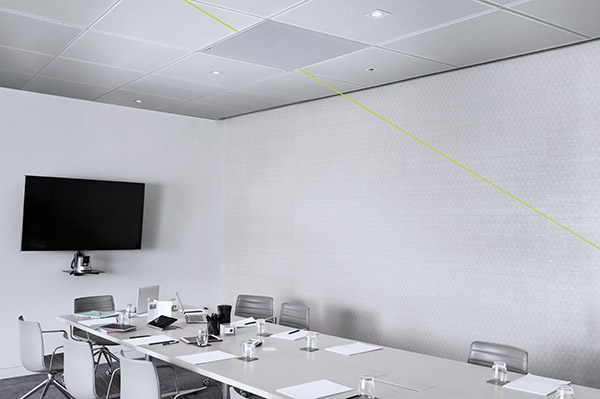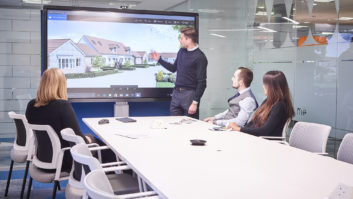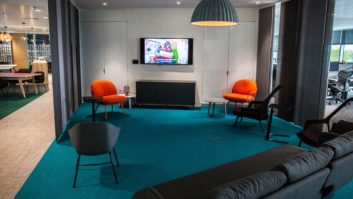
In the second part of our feature on meeting room essentials, we take a look at audio.
So what are the essential elements of a small to medium-sized meeting room, and which can be potentially set to one side if budgets are more limited? Well, on the audio side, you would be hard-pressed to find many companies who didn’t want the flexibility afforded by wireless as well as wired microphones, for general meeting room contributions as well as specific presentations. Ceiling or wall-speakers may well be favoured over free-standing PA units, if only for aesthetic reasons, while a standalone DSP system may be required depending on the specifics of the room and the extent to which its applications vary.
Not surprisingly, solutions that can combine one or more audio needs have proven popular in a sector where space is frequently at a premium. According to Shure’s Rob Smith: “A focus for us is ease of installation and innovative new solutions that take away the need for third-party products. For example, it should be possible to install the [Shure networked ceiling array microphone platform] Microflex Advance MXA910 with IntelliMix into a 10 x 10sqm room and not have any set-up requirements, which means install costs go down. We’ve also launched a new firmware version that adds enhanced IntelliMix DSP functionality to the MXA910, which can remove the need for an external DSP, improving overall costs and saving installation time.”
In conjunction with the aforementioned core components, there is a continuing increase of interest in being IP-capable. “Everything is heading towards structured cable – IP-based solutions – connecting to an AV or corporate network. This is why all of our core systems integration products have IP-based functionality.”
When it comes to the likely impact of some emerging audio technologies on the meeting room environment, Smith says: “We’ve seen a huge amount of interest in voice lift systems, basically down to the practicality of not having to pass a microphone around in large corporate meeting environments, particularly if it’s a multi-use space, with the microphones in the ceiling being used for voice reinforcement.”
As for immersive audio and other technologies now frequently bracketed under the ‘Next Generation Audio’ banner, “it’s a requirement of bigger projects that comes up from time to time. Personally, I don’t think it’s an application that will come into huddle spaces in the very near future. However, every now and then there’s an interesting project that requests it, and when it’s done well it’s very impressive.”
Meanwhile, there are logistical and practical benefits of achieving more seamless integration between audio and video systems – not to mention reduced expense because of the more simplified installation requirements. With Shure now an accredited partner of Zoom, “all our core systems work seamlessly with their software. For example, hitting mute in the Zoom App will dynamically mute the connected Shure microphones. It’s a lot of work between Shure and Zoom engineers, but ultimately gives the end-user a more efficient and effective system.
“In addition, clients purchasing the approved Zoom/Shure package can rest assured that it will work seamlessly and perform brilliantly, along with making the job easier for IT professionals specifying rooms and the integrator installing the system.”







